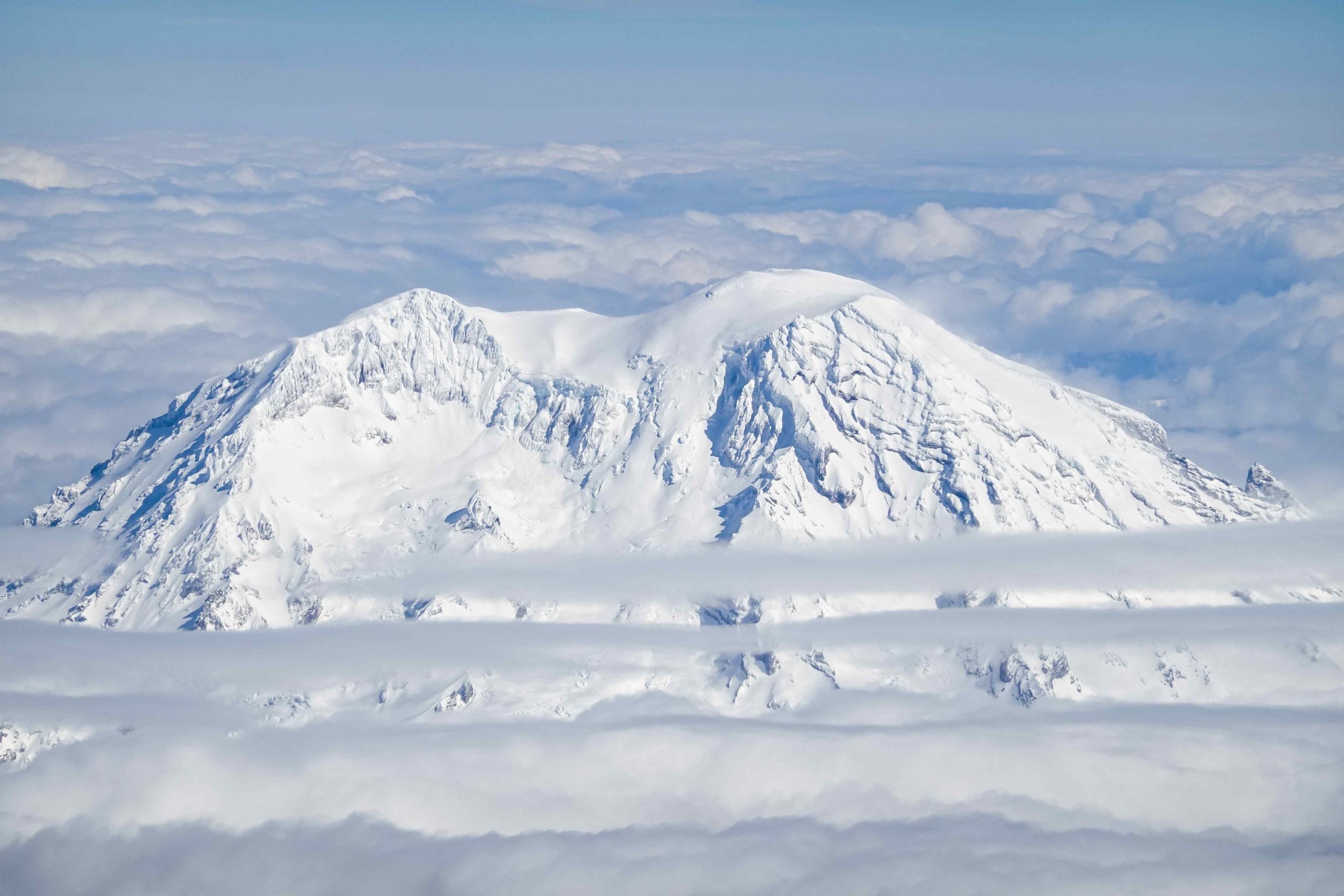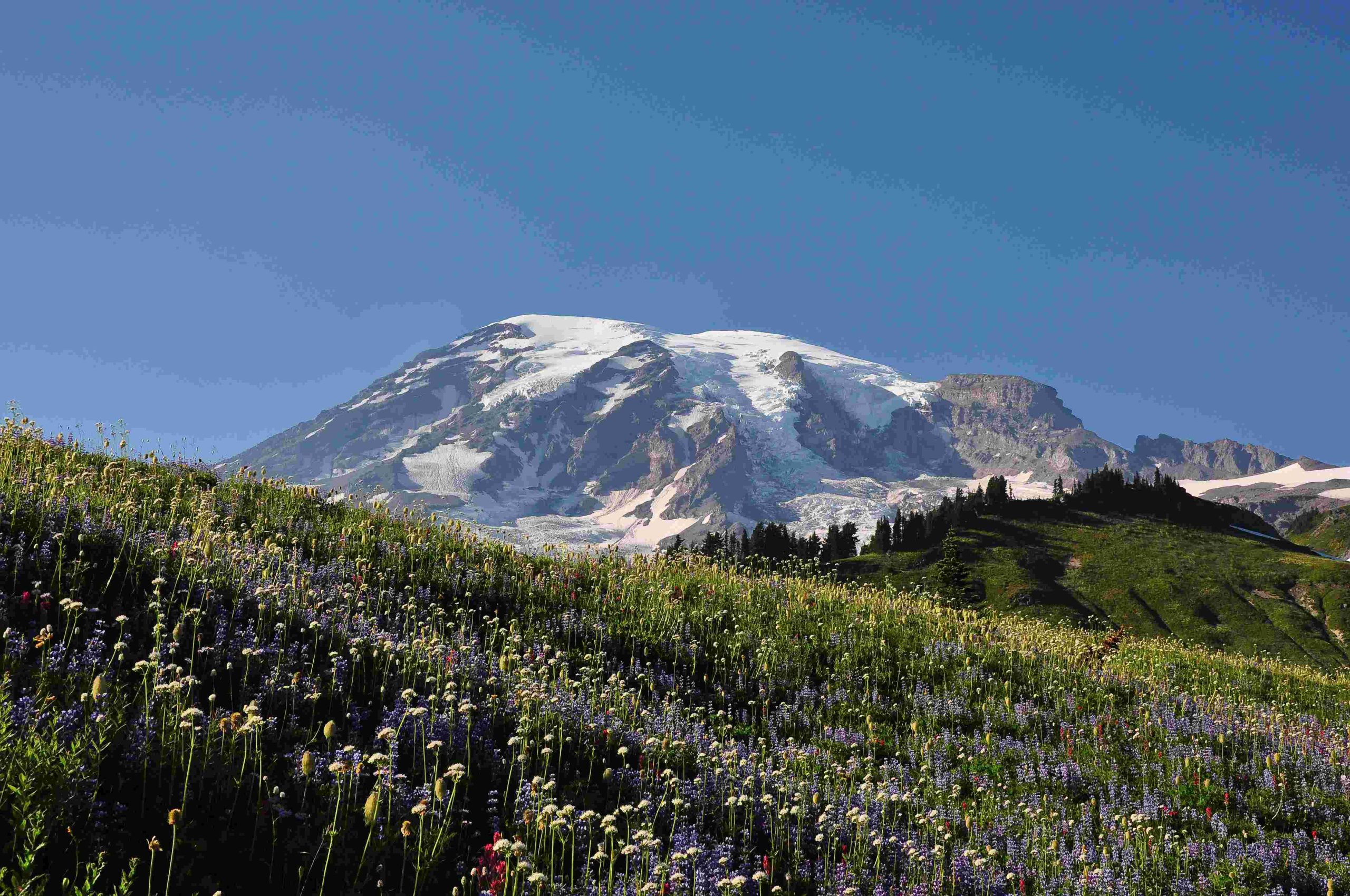Mount Rainier’s sunrise flowers are a breathtaking display of nature’s beauty, painting the subalpine meadows with vibrant colors from mid-July through August. These wildflowers, including lupine, paintbrush, and glacier lilies, thrive in the unique environmental conditions of Mount Rainier National Park. Visitors can witness this spectacular floral show at various locations, such as the Sunrise Visitor Center and Paradise area, each offering distinct species and photographic opportunities.
What Are the Specific Species of Mount Rainier Sunrise Flowers?

Mount Rainier’s subalpine and alpine meadows host a diverse array of wildflowers, each contributing to the stunning visual tapestry. Here are some of the most prominent species you can expect to encounter:
- Lupine (Lupinus latifolius var. subalpinus): These dominant blue flowers create dramatic displays across the meadows.
- Sitka Valerian (Valeriana sitchensis): Recognizable by its white hemispherical flowerheads, often found alongside lupine.
- American Bistort (Bistorta bistortoides): A small white plant with a distinctive bottle brush-like flowerhead.
- Paintbrush (Castilleja cryptantha and other species): Known for their vibrant red and yellow colors.
- Glacier Lily (Erythronium grandiflorum): Yellow flowers that often form expansive fields in subalpine areas.
- Avalanche Lily (Erythronium montanum): White flowers that thrive in areas with late snowmelt.
- Pasqueflower (Pulsatilla occidentalis): One of the earliest bloomers, featuring purple petals and a yellow center.
When Is the Best Time to See Mount Rainier Sunrise Flowers?

The blooming season for Mount Rainier’s wildflowers typically reaches its peak from mid-July through August. However, the exact timing can vary based on several factors:
- Previous winter’s snowfall
- Current weather conditions
- Elevation of the specific location
| Month | Blooming Status |
|---|---|
| June | Early bloomers start to appear |
| July | Peak bloom begins mid-month |
| August | Peak bloom continues |
| September | Late-season flowers remain |
It’s important to note that the subalpine and alpine zones, where most of these flowers bloom, are particularly sensitive to environmental conditions. A heavy snowfall year can delay the bloom, while warmer and drier conditions might accelerate it.
Where Are the Best Locations to View Mount Rainier Sunrise Flowers?
Several key locations within Mount Rainier National Park offer excellent opportunities to view the sunrise flowers:
- Sunrise Visitor Center
- GPS: 46.9183° N, 121.4403° W
- Ideal starting point for accessing subalpine meadows
-
Trail to Burroughs Mountain offers diverse alpine species
-
Paradise
- GPS: 46.7873° N, 121.7417° W
- Famous for masses of colorful subalpine flora
-
Dominated by lupine and Sitka valerian
-
Chinook Pass and Naches Loop Trail
- GPS: 46.8719° N, 121.5153° W
-
Good moderate walks for flower spotting in alpine zones
-
Mowich Lake
- GPS: 46.9333° N, 121.8667° W
- Hiking from here leads to the flower fields of Spray Park
Each location offers unique perspectives and species compositions, allowing visitors to experience the full range of Mount Rainier’s floral diversity.
What Photography Tips Can Enhance Sunrise Flower Images?
Capturing the beauty of Mount Rainier’s sunrise flowers requires some photographic skill and planning. Here are some tips to help you get the best shots:
- Optimal Times
- Early morning: Soft, golden light
- Late afternoon: Warm, directional light
-
Avoid midday: Harsh, overhead sunlight
-
Camera Settings
- ISO: 100-400 to minimize noise
- Aperture: f/8 to f/11 for good depth of field
-
Polarizing filter: Reduces glare and enhances colors
-
Composition Techniques
- Include Mount Rainier or other landscape features in the background
- Use a wide-angle lens for expansive meadow shots
-
Consider a macro lens for close-up flower details
-
Lighting Considerations
- Golden hour: Shortly after sunrise or before sunset
- Overcast days: Soft, diffused light for even exposure
Remember to respect the fragile ecosystem and stay on designated trails while photographing.
How Can Visitors Prepare for a Mount Rainier Sunrise Flower Experience?
Preparing for your visit to see Mount Rainier’s sunrise flowers is crucial for a safe and enjoyable experience:
- Check Park Conditions
- Visit the National Park Service website for up-to-date information
-
Confirm trail conditions and any closures
-
Pack Essentials
- Water and snacks
- Sun protection (hat, sunscreen, sunglasses)
- Layers of clothing for changing temperatures
-
Sturdy hiking shoes
-
Arrive Early
- Parking areas fill up quickly, especially on weekends
-
Early arrival ensures better light for photography
-
Follow Park Rules
- Stay on designated trails to protect fragile ecosystems
-
Practice Leave No Trace principles
-
Be Prepared for Crowds
- Peak season can be busy, especially at popular viewpoints
- Consider visiting on weekdays for a quieter experience
By following these guidelines, visitors can fully appreciate the spectacular display of Mount Rainier sunrise flowers while helping to preserve this natural wonder for future generations.
References:
1. https://www.nargsnw.org/mount-rainier
2. https://flowersofrainier.com/wildflower-distribution-in-mount-rainier-national-park/
3. https://www.nps.gov/mora/learn/nature/wildflowers.htm
